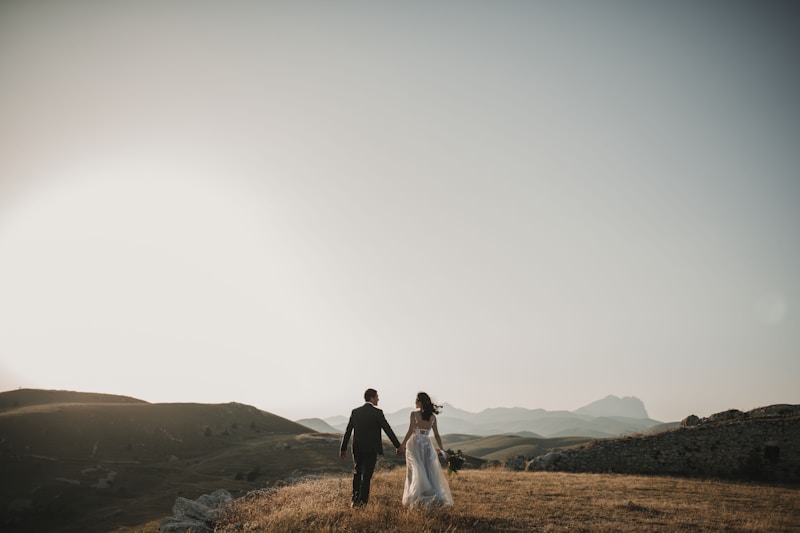Mastering Wedding Outfit Coordination: The Ultimate Guide for a Flawless Celebration
Introduction to Wedding Outfit Coordination
Your wedding day is one of the most significant moments in your life, where every detail matters. One critical aspect that can make or break the aesthetics of your celebration is wedding outfit coordination. The right coordination not only brings harmony to your wedding party's appearance but also enhances the overall ambiance of the event. In this guide, we’ll dive into the essentials of wedding outfit coordination, tips, and suggestions to ensure a stunning visual impact on your big day.
Understanding Wedding Outfit Coordination
Wedding outfit coordination involves piecing together the different outfits worn by the wedding party, including the bride, groom, bridesmaids, groomsmen, and other close family members. The goal is to create a cohesive look that reflects the couple’s style and the theme of the wedding. This process requires careful planning and consideration of various elements including color, fabric, and accessories.
Factors to Consider for Wedding Outfit Coordination
When coordinating wedding outfits, several factors come into play. Here are some aspects to keep in mind:
- Color Palette: Choose a color palette that complements the wedding theme. For instance, if you are having a spring wedding, soft pastels may be ideal.
- Fabric Choices: The fabric should not only match in color but also in texture. Consider the season of your wedding when selecting materials.
- Style and Silhouette: Outfits should complement each other in style. For example, if the bride chooses a vintage style gown, the bridesmaids' dresses could reflect a similar vintage charm.
- Accessories: Accessories play a vital role. Ensure they enhance the outfit without overwhelming it. Matching jewelry or shoes can tie the look together.
Tips for Successful Wedding Outfit Coordination
Successfully coordinating wedding outfits requires organization and communication. Here are essential tips to achieve optimal results:
1. Establish a Theme Early
Begin by deciding the theme of your wedding. Whether it's a rustic barn wedding or a glamorous ballroom affair, the theme will dictate your color palette and style choices.
2. Involve Key Participants
Encouraging input from the bridal party ensures a sense of belonging and helps convey their preferences, fostering enthusiasm for the attire.
3. Create a Cohesive Color Palette
Use tools like color swatches or online color matching tools to visualize how different colors work together. Aim for consistency without being identical.
4. Dress for the Season
Different seasons offer unique styles. Summer weddings may call for lighter fabrics and colors, while winter weddings can embrace heavier textiles and richer hues.
5. Consider the Venue
The wedding venue influences outfit choices. For example, formal beach weddings may necessitate lighter attire compared to a traditional church setting.
| Consideration | Example for Summer Wedding | Example for Winter Wedding |
| Color Palette | Soft pastels (like peach, mint) | Deep jewel tones (like burgundy, emerald) |
| Fabric Choices | Lightweight materials (like chiffon, linen) | Heavier fabrics (like velvet, satin) |
| Accessories | Floral crowns, light shawls | Faux fur wraps, statement jewelry |
Outfit Coordination for Different Wedding Roles
Brides and Grooms
The focus is on the bride and groom's outfits, which should harmonize with the bridal party’s attire. The bride’s dress style—be it ball gown, A-line, or mermaid—should dictate the formality of the groom's attire, such as a tuxedo, suit, or tailored outfit.
Bridesmaids and Groomsmen
Bridesmaids' dresses should complement the bride’s gown, but you can vary the styles while keeping the color consistent. Groomsmen's outfits should match the groom's but can differ in ties or pocket squares to allow for individuality.
Family Members
Close family members should also coordinate their outfits. Mothers of the bride and groom should match the wedding theme but avoid outshining the couple. A simple guideline is to inform them of the color palette early on.

Common Questions about Wedding Outfit Coordination
What colors work best for wedding outfit coordination?
There’s no definitive answer, but popular choices include classic white, blush pink, navy blue, and shades of green. The best approach is to select a palette that suits your wedding theme and season.
How do I choose bridesmaid dresses that everyone will love?
Prioritize comfort and personal style. Consider offering a selection of colors or styles that align with your wedding theme, which allows bridesmaids to express their individuality.
What should the groom wear to coordinate with the bride?
The groom's outfit should complement the bride’s dress. For instance, if it's a vintage lace gown, a tailored suit with classic elements will work well.
How can we incorporate cultural attire in our wedding outfits?
Incorporating cultural attire can be beautiful and respectful, so communicate openly and ensure that it fits well within the overall wedding theme.
Conclusion
Wedding outfit coordination is essential in crafting a stunning celebration that resonates with the couple's vision. While the process may seem daunting, it’s a rewarding opportunity to express style and unity among your wedding party. Remember that the key lies in planning, communication, and creativity. As you embark on this journey, keep in mind that every outfit tells a story, from the bride and groom to the wedding party. With thoughtful considerations and these tips in hand, you're well on your way to achieving a seamless coordination that will shine on your big day. Make sure to enjoy each moment as you create memories that will last a lifetime!